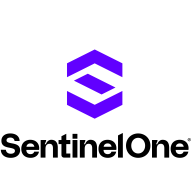


Symantec Storage Protection and Microsoft Defender for Cloud are competing products in storage protection and cloud security. Microsoft Defender for Cloud appears to have the upper hand due to its comprehensive features and perceived value, despite Symantec's better pricing and support.
Features: Symantec Storage Protection provides strong data integrity measures, secure backup solutions, and cost-effective security. Microsoft Defender for Cloud offers advanced threat detection, robust integration capabilities, and extensive cloud security coverage, appealing to businesses seeking extensive protection.
Ease of Deployment and Customer Service: Symantec Storage Protection offers straightforward deployment coupled with reliable customer support. Microsoft Defender for Cloud provides a multifaceted deployment model with strong support, which may involve a steeper initial learning curve.
Pricing and ROI: Symantec Storage Protection is cost-effective, offering favorable ROI through competitive pricing and efficient setup. Microsoft Defender for Cloud involves higher initial investment but promises significant ROI through expansive features and enhanced security measures, delivering greater long-term value.


SentinelOne Singularity Cloud Security protects cloud workloads, offering advanced threat detection and automated response. It integrates seamlessly with cloud environments and secures containerized applications and virtual machines against vulnerabilities.
SentinelOne Singularity Cloud Security is renowned for its efficiency in mitigating threats in real-time. The platform integrates effortlessly with existing cloud environments, ensuring robust cloud security management with minimal manual intervention. Securing containerized applications and virtual machines, it excels in threat intelligence and endpoint protection. However, improvements are needed in performance during high workload periods, and more integrations with third-party tools and better documentation would be beneficial. Users often find the installation process complex, support response times slow, and the dashboard's navigation unintuitive.
What are the key features of SentinelOne Singularity Cloud Security?In specific industries, SentinelOne Singularity Cloud Security is implemented to safeguard critical data and infrastructure. Organizations in finance, healthcare, and technology depend on its real-time threat detection and automated response to protect sensitive information. Its ability to secure containerized applications and virtual machines is particularly valuable in dynamic environments where rapid scaling is necessary.
Microsoft Defender for Cloud is a comprehensive security solution that provides advanced threat protection for cloud workloads. It offers real-time visibility into the security posture of cloud environments, enabling organizations to quickly identify and respond to potential threats. With its advanced machine learning capabilities, Microsoft Defender for Cloud can detect and block sophisticated attacks, including zero-day exploits and fileless malware.
The solution also provides automated remediation capabilities, allowing security teams to quickly and easily respond to security incidents. With Microsoft Defender for Cloud, organizations can ensure the security and compliance of their cloud workloads, while reducing the burden on their security teams.
Symantec Cloud Workload Protection for Storage helps to protect AWS S3 buckets, enabling secure adoption of containers and serverless technologies such as AWS Lambda. Symantec’s suite of anti-malware technologies, including advanced machine learning and reputation analysis, help to discover and remediate known and unknown threats to keep cloud storage clean. Automatic, scheduled, and on-demand scanning modes enable full-time protection to inspect files as they are uploaded, downloaded, or modified. S3 bucket security posture, alerts, and events are viewed in the single CWP console.
We monitor all Cloud Workload Protection Platforms (CWPP) reviews to prevent fraudulent reviews and keep review quality high. We do not post reviews by company employees or direct competitors. We validate each review for authenticity via cross-reference with LinkedIn, and personal follow-up with the reviewer when necessary.